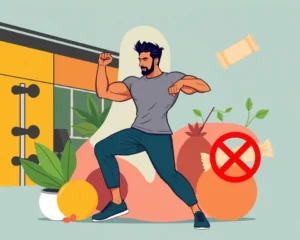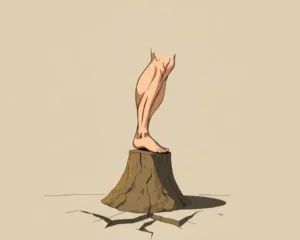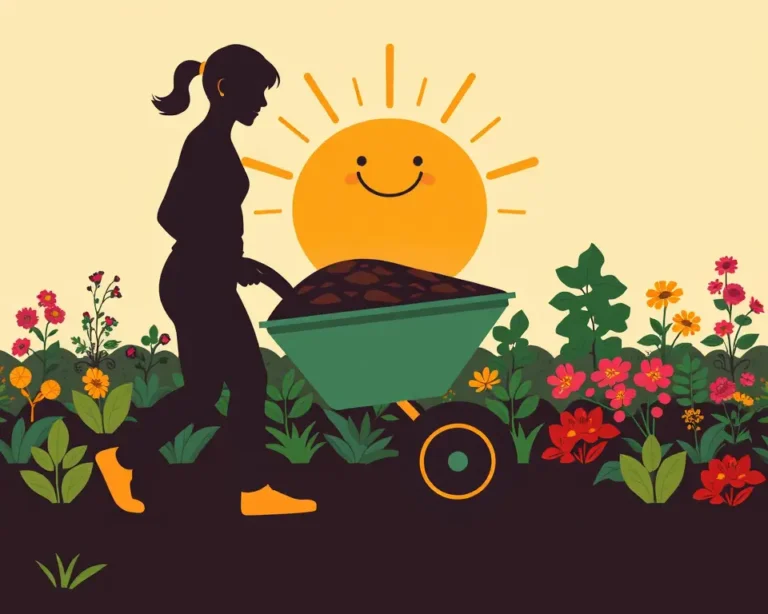For those looking to boost their physical fitness, the answer might be closer than they think – right in their backyard. Gardening, often seen as a relaxing hobby, is gaining recognition as a muscle-building activity that provides a full-body workout. Forget expensive gym memberships; the path to a stronger you could be paved with petunias and pruned roses.
The Unexpected Workout: How Gardening Builds Muscle
Gardening is more than just gently tending to plants; it’s a moderate exercise that engages various muscle groups. From digging and planting to weeding and mowing, each activity contributes to a comprehensive workout. Here’s how:
- Digging: This high-intensity activity works muscles in both the lower and upper body, including the quads, shoulders, and back. The motion of pressing a shovel down with your foot and turning over the soil requires significant force and engages multiple muscle groups.
- Weeding: While often less enjoyable, weeding by hand is an effective strength exercise. Bending and pulling weeds engages back, leg, and grip strength, similar to deadlifts in the gym.
- Mowing the Lawn: Pushing a lawnmower, especially a non-self-propelled one, provides a workout comparable to pushing a prowler sled, engaging the glutes, legs, and core.
- Raking: This repetitive motion works your arms, shoulders, and back, providing a cardio element while building upper body strength.
- Lifting and Carrying: Moving pots, bags of mulch, and gardening tools builds strength in your arms, shoulders, and back. Even carrying a watering can engages your muscles.
- Planting: The act of planting, which involves squatting and reaching, enhances flexibility and works various leg muscles.
Beyond these specific activities, simply walking around the garden keeps you moving and contributes to overall fitness. According to Anastasia Hancock, a volunteer with GoodGym, “Gardening is strength, cardio, and conditioning all in one – it’s a full-body workout.”
Calorie Crusher: Gardening for Weight Management
Besides building muscle, gardening is an effective way to burn calories. Depending on the activity, you can burn between 250 to 500 calories per hour. Harvard Medical School found that 30 minutes of gardening can burn a comparable number of calories to sports like walking, cycling, or yoga.
Here’s a breakdown of calorie burn for different gardening activities:
- Light gardening tasks (planting, potting): 175-300 calories per hour.
- Heavier duty tasks (tilling, pushing a wheelbarrow): 450-550 calories per hour.
- Digging: 150-197 calories per 30 minutes.
- Planting: 135-177 calories per 30 minutes.
- Weeding: 138-166 calories per 30 minutes.
- Push mowing: 150-200 calories per 30 minutes.
- Raking: 120-157 calories per 30 minutes.
The Centers for Disease Control and Prevention (CDC) notes that gardening for just 30-45 minutes can burn up to 300 calories, making it a viable way to manage weight. Regular gardening can offset age-related weight gain.
Health Beyond Muscle: Additional Benefits of Gardening
The advantages of gardening extend far beyond muscle strength and calorie burn. Gardening offers a range of physical and mental health benefits:
- Improved Cardiovascular Health: Gardening gets your heart pumping, improving its health.
- Enhanced Flexibility and Mobility: Stretching, bending, and reaching while gardening keeps you limber and improves overall mobility.
- Reduced Risk of Chronic Diseases: Regular gardening can lower blood pressure and cholesterol levels, helping prevent diabetes, heart disease, and osteoporosis.
- Boosted Immune System: Exposure to sunlight while gardening increases vitamin D levels, crucial for immune function, and can help fight disease, control infections and reduce inflammation.
- Stress Reduction: Gardening reduces stress levels and promotes relaxation.
- Improved Mental Health: Gardening can reduce symptoms of depression and anxiety and improve cognitive function. Studies have shown that gardening can improve mood and mental health, even just observing nature or images of natural scenes can be beneficial.
- Increased Self-Esteem: Nurturing plants and seeing them grow can provide a sense of accomplishment and boost self-esteem.
- Fine Motor Skills and Dexterity: Tasks like sowing seeds and delicate pruning enhance fine motor skills.
Ergonomics and Injury Prevention: Gardening Smart
To maximize the benefits of gardening while minimizing the risk of injury, it’s crucial to practice good ergonomics and take precautions:
- Warm-Up: Before starting, warm up your body with stretches to prepare your muscles.
- Use Safe Body Mechanics: Maintain the natural curves of your back while lifting, reaching, and bending. Bend your knees, not your back, to avoid strain.
- Take Breaks: Take frequent rest breaks to avoid overexertion and repetitive strain injuries.
- Stay Hydrated: Drink plenty of water, especially on hot days.
- Protect Your Skin: Apply sunscreen, wear a broad-brimmed hat, and wear long sleeves to prevent cuts and scratches.
- Use Ergonomic Tools: Invest in tools designed to reduce strain on your joints and muscles. Look for tools with cushioned handles, adjustable lengths, and lightweight materials.
- Vary Tasks: Alternate between light and heavy activities to avoid overuse of specific muscle groups.
- Ergonomic tools are designed to fit natural body positions, reducing the chance of injury by forcing you to work in a good posture without extreme leaning or twisting.
- Raised beds reduce how much you need to bend over or kneel.
Ergonomic Tools to Consider
- Pruners with Rotating Handles: Reduces wrist strain.
- Radius Garden Weeder: Reduces pressure on the wrists.
- Long-handled tools: Helps keeping your back straight.
- Garden Kneeler/Sitter: Cushions knees and provides stability while kneeling.
- Lightweight coiled hose: Prevents tangles and reduces the strain of lugging heavy watering cans.
- Ergonomic hand tools: Trowels, pruners, shears, weeding tools, and transplanters with comfortable, cushioned handles.
Conclusion: Grow Strong with Gardening
Gardening offers a unique blend of physical and mental health benefits. It’s an accessible and enjoyable way to build muscle strength, burn calories, and improve overall well-being. By incorporating ergonomic practices and using the right tools, you can transform your garden into a personal gym, reaping the rewards of a stronger, healthier you. So, ditch the gym membership and grab a shovel – your garden awaits, offering a path to a fitter and more fulfilling lifestyle.







